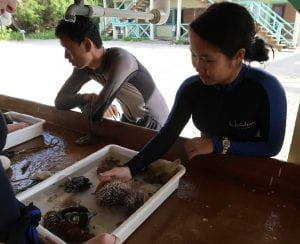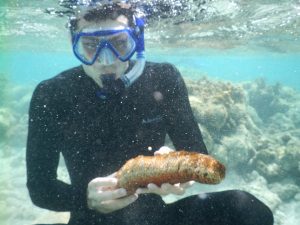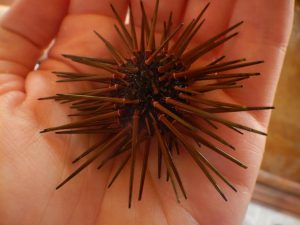We took the boat out for the first time to survey two patch reefs. The first one, Marisol, was within a marine-protected area (MPA). The second was not within a marine-protected area (non-MPA). There were some grey clouds in the sky as we drove out to the first patch reef, but I did not feel the sprinkling as I was snorkeling in the cold water. I saw snappers as usual, and what I thought to be a foot-long grouper that quickly swam away before I could fully process its presence.
In the afternoon, the class geared up to wade into sea-grass off of the island. We were looking for creatures to capture and keep in a ‘touch tank’ briefly for our observation. As a class, we caught many queen conchs (and one conch shell occupied by a crab), two donkey-dung sea cucumbers, a sea egg urchin, a pencil slate urchin, a red heart urchin, an octopus!, two fire worms, a damselfish, several brittle stars, two sun anemones, several types of coral and algae, and many hermit crabs—no piscivorous fish though! The water is too shallow for these big boys. It was interesting to feel and observe the organisms from other taxons though. The donkey dung sea cucumber was particularly interesting as it molded into your hand as you squeezed it.
Me touching a West Indian Sea Egg (Tripneustes ventricosus), a type of urchin
We ended the night with lectures on herbivorous fish, piscivorous fish (given by yours truly), and how competition, predation, and environment shape coral reefs.



